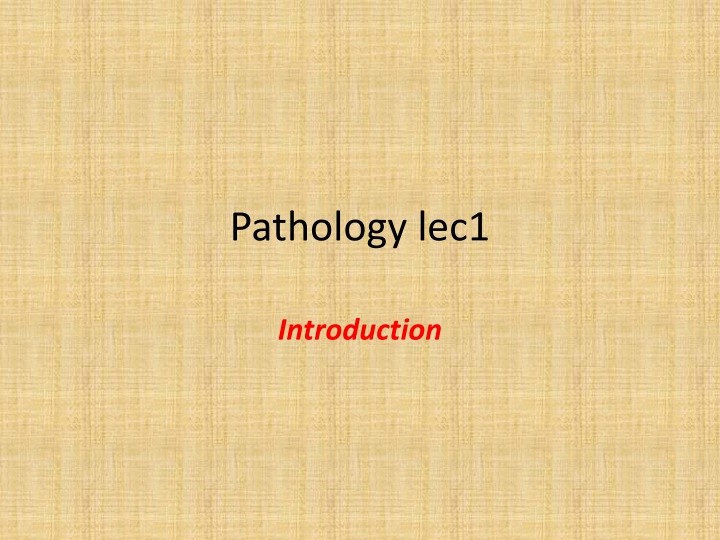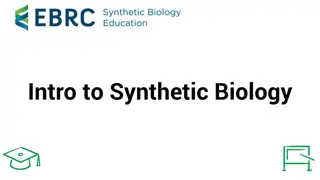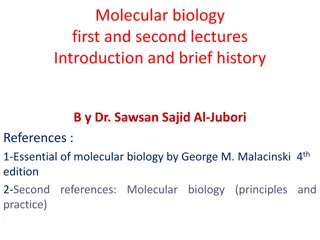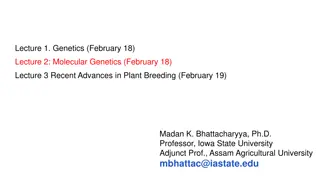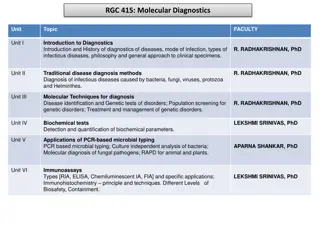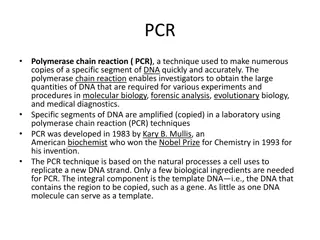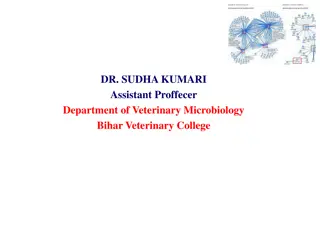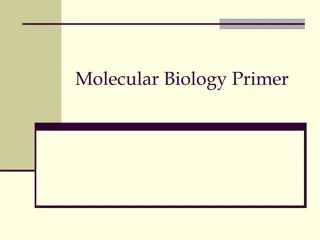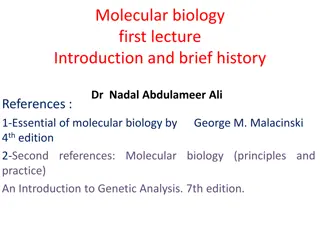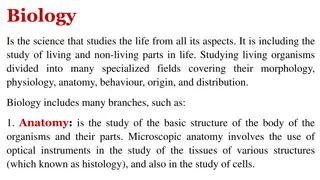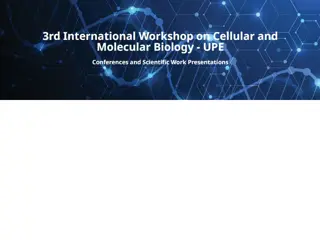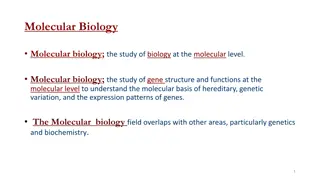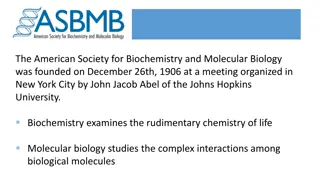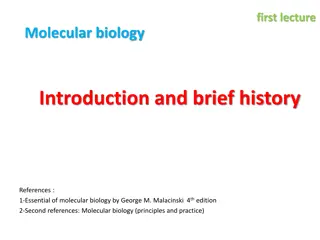Introduction to Molecular Biology and Griffith's Experiment
Molecular biology delves into the study of macromolecules such as DNA, RNA, and proteins to decipher fundamental cellular behaviors. Learn about the pioneering research of Friedrich Miescher and Griffith's transformative experiment in bacterial genetics. Explore the historical milestones that shaped the foundation of molecular biology as a distinct scientific discipline.
Download Presentation

Please find below an Image/Link to download the presentation.
The content on the website is provided AS IS for your information and personal use only. It may not be sold, licensed, or shared on other websites without obtaining consent from the author.If you encounter any issues during the download, it is possible that the publisher has removed the file from their server.
You are allowed to download the files provided on this website for personal or commercial use, subject to the condition that they are used lawfully. All files are the property of their respective owners.
The content on the website is provided AS IS for your information and personal use only. It may not be sold, licensed, or shared on other websites without obtaining consent from the author.
E N D
Presentation Transcript
Pathology lec1 Introduction
What is pathology??? Why? How? What? How?
Diseases may, in turn, be defined as an abnormal variation in structure or function of any part of the body
Pathology is the study (logos) of disease (pathos). The study of the structural, biochemical, and functional changes in cells, tissues, and organs that underlie disease.
Etiology Pathogenesis Disease G&M changes
Etiology or Cause There are two major classes of etiologic factors: Genetic (e.g., inherited mutations and disease-associated gene variants, or polymorphisms) Acquired (e.g., infectious, nutritional, chemical, physical).
Pathogenesis Or Mechanism Pathogenesis refers to the sequence of events in the response of cells or tissues to the etiologic agent, from the initial stimulus to the ultimate expression of the disease.
Molecular and Morphologic Changes Morphologic changes refer to the structural alterations in cells or tissues that are either characteristic of a disease or diagnostic of an etiologic process.
Functional Derangements and Clinical Manifestations The end results of genetic, biochemical, and structural changes in cells and tissues are functional abnormalities, which lead to the clinical manifestations (symptoms and signs) of disease, as well as its progress (clinical course and outcome).
Question ??? Can you apply the previous terms to form a diagram for Aphthous ulcer?
Fields of Pathology Cytology Histopathology Immunopathology; Microbiology Hematopathology; Forensic pathology Chemical pathology Medical genetics; Diagnosis
Histopathology Gross : Describe what you see by your eyes to be imagined by others brains!!!
Special techniques : to see what is hidden!!! Immunohistochemistry Immunofluorescence Histochemistry Molecular study Electron microscope
General pathology Systemic pathology Is the study of various systems that comprise the body such as cardiovascular pathology, gastrointestinal pathology and so on. It includes the descriptions of specific diseases as they affect individual organs (e.g. appendicitis, lung cancer, atheroma etc,). Is concerned with the causations, mechanisms and characteristics of the major categories of disease (e.g. cell injuries and degenerations, inflammations, healing, neoplasia).
Pathology study: General: Homeostasis & Adaptation Cell injury & cell death Tissue healing and repair Inflammation Hemodynamic Environmental Infectious Genetic Neoplasia
Systemic pathology: o Cardiovascular o Hematology o Respiratory o GIT and liver o Endocrine o Ect .
BIOPSY: It is a process of surgically removing tissue from a patient for histopathological examination. It provides valuable information in determining the prognosis and type of the treatment required.
Biopsy: incisional biopsies: only a portion of the lesion is sampled, and therefore the procedure is strictly of a diagnostic nature. excisional biopsies : the entire lesion is removed, usually with a rim of normal tissue, and therefore the procedure serves both a diagnostic and a therapeutic function.
